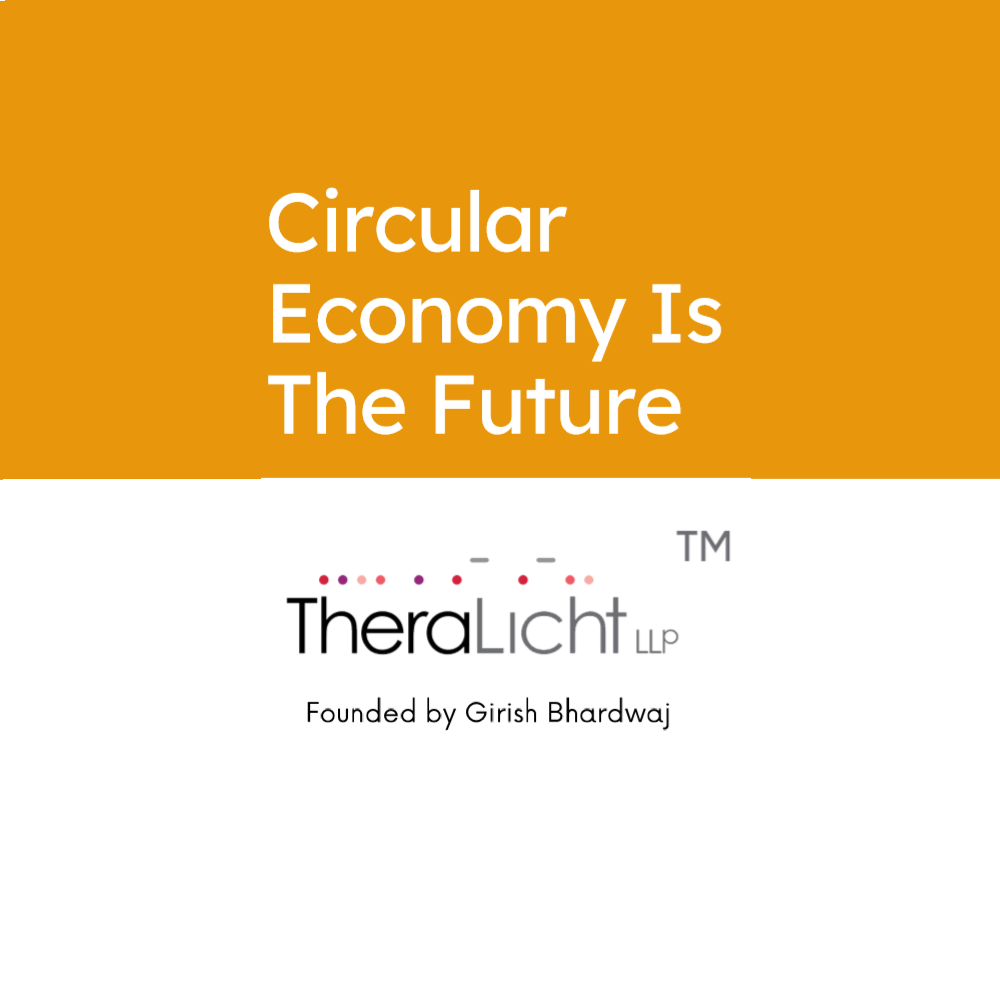The circular economy in a very simple term is the process of designing, manufacturing and maintaining the products being used so that it is recyclable reusable and finally does not end up as the landfills or pure waste in form of non-biodegradable material.
Before discussing further one question, are you aware of any living creature who produces waste? [Waste here is referred to any such material (biological or any form which no one can use.]. The answer is “Human beings”. Since no other creature produces the waste which cannot be reused. We have many examples like cow dung, algae, and fungi fossils.
On one hand we have to support the innovations and the technologies but on the other hand we have to help our mother nature to reduce the burdens caused by our material and energy consumption. It can help protect ecological goods and services from the pollution and wastes we generate. This strategy can also help us limit our overall demand for resources per capita so that there are enough for the wellbeing of all.
There is one very simple logic to move ahead with this principle of circular economy:
“IF WE DO NOT THROW WASTE ON THE GROUND WE DO NOT HAVE TO PICK IT UP”
Girish Bhardwaj
Similarly if the processes is conceptualised of not producing any waste* [Waste here is referred to any such material (biological or any form which no one can use.], then no one has to worry on the waste management. However this is at the moment seems impractical, thus our designs for choosing the raw material to manufacture the goods have to be very thoughtful in line with the drive towards preserving the biodiversity.
The appropriate and any forms of circular economy can ensure securing our resources for our societies to function and develop. Achieving a circular economy needs the engagement of all the individuals at all the given levels.
There is no escape for anyone. There can be multiple strategies that can be accepted to ensure that products and materials remain within the economy without ending up in the biosphere.
This evolution also needs new thinking, new social systems, new forms of engagement, and new institutions. The concept of Circular Economy allows us to focus on issues of resources and how they are used and managed in a business context. In the current scenario of economy and pandemic circumstances, we are consuming too many resources, too fast, and we are not reusing them all.
Over the last one decade in the field of lighting LEDs have made a huge contribution towards the new applications, creativity, reduced energy, climate change and programs like net zero energy. There is a huge boom in the lighting industry.
However there are several unintentional concerns as the major disadvantages from LEDs especially in
- Physiology,
- Being unmaintainable luminaire,
- The poor life cycles of the respective components. (The difference between the bad and the best was minimalistic (commercially)
- Increased dependency on some nations only and primarily CHINA. Thus the Offshoring and mileage (burning of fossil fuels etc). there were local manufacturer in almost all the nations
- No policy on buy back or the waste management by the manufacturers.(It was there with the Fluorescents)
- There are lot many issues on addressing the same from lighting industry towards the contribution in circular economy movement and programs
Myself along with the team of Theralicht™️ LLP are trying to optimize the design in line with the circular economy way. We are exploring and implementing the ways of integrating the maximum parameters (governed by certain international organizations and the platforms) required for the given applications, product design, lighting design and the project management.
LEDs are to be used and we are confident that the LED organisations are improving on the respective parameters of LEDs, but with no doubt, we have to bring back the Fluorescents to support many concerns which LEDs cannot suffice. (With certain guidelines, protocols and regulations)
Here are the POLL results on the same topic, which I did on LINKEDIN
Should Fluorescents (36 W- 4ft triple phosphorous type) be back for many needed office and residential lighting applications?
- YES, Circular Economy & waste mgmt. 8%
- YES, Physiology and wellbeing 58%
- No not at all 17%
- YES, Maybe 17%
According to CEI– Technical materials include fossil fuels (i.e., petrol, oil, and natural gas), minerals, metals and plastics (e.g., polyester, nylon, and other plastics usually found in clothing, electronics, packaging and regular housewares).
According to the researchers along with the organizations like CIBSE (TM66), SLL and CIE, the first is biodiversity and the threats of toxicity. Lighting products are designed in such a fashion that they are very difficult to reconstruct and so the most toxic of materials within are discarded to the biosphere.
One of my projects to contribute towards the circular economy was done in association with ALTO INDIA to use their product and services for an office in Ahmedabad, Gujarat- INDIA. The aim of this project (D P Analytics) is to impart benefits to customers as well as the manufacturers
- By adopting a manufacturing process of the housing of the luminaires from the scrap but with a longer shelf life.
- By collecting the non-functional luminaires- reverse logistics phenomenon, its accessories and re use these parts with the help of respective factories.
- By offering AMC at a very low price.
- Offering a lease option to the client rather offering him a purchase option. With this the ownership of the luminaires is with Alto India. This has allowed them to work in sync with the respective client for the reasons
- In case the client wants to move his office to another place after some years then in that case Alto India will either help them in uninstalling and reinstalling these fittings with the upgraded version.
- In case the client seeks the new range of the luminaires either from them or someone, then, Alto India will use the parts of the luminaires either for the furbishing or to be used for their other respective purposes (R&D, some other applications or parts to be sold to the respective factories to be recycled)
- Apart from this we are carrying out the audits so that the retrofit models can be upgraded and the buyback products are used at the places where it has an appropriate use till the end of the life.
Our hope is that we can prove that these types of radical circular business strategies work in the real economy!
Read all blogs : https://yellout.in/girish/blog/
Girish Bhardwaj is a renowned wellness and sleep specialist and also a founder of Theralicht llp company which specializes in lighting consultancy, Indoor air quality consultancy, circular economy in India and product design.

